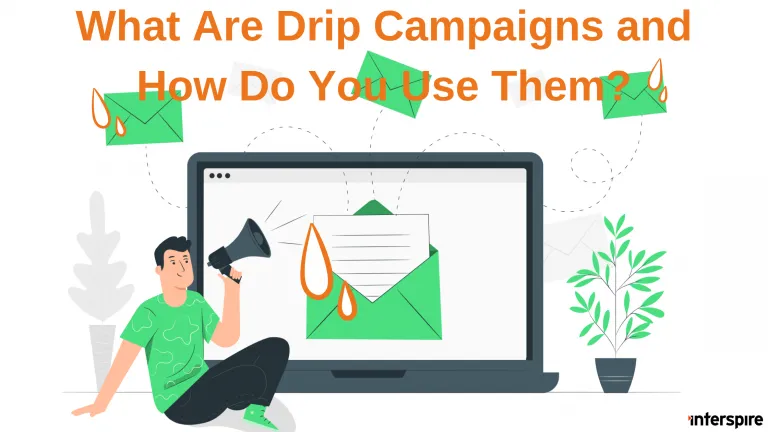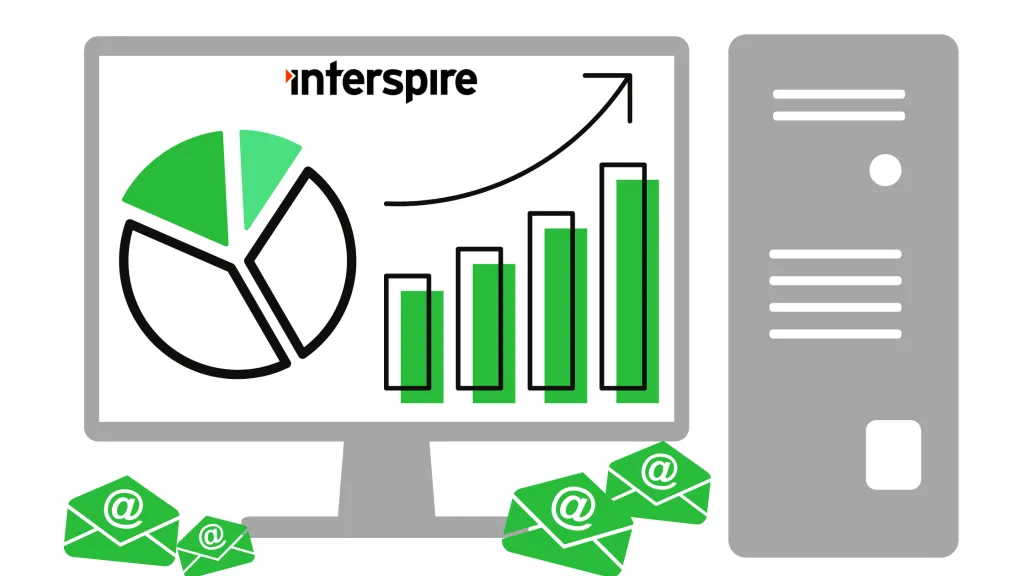Drip campaigns are essential if you want to stay ahead of the competition. Drip emails are one of the better ways to connect with your audience and provide them value over time. What are they and how can you use them to better engage with your audience and customers?
What is a Drip Campaign
A drip campaign, also known as an email sequence or drip marketing, is a marketing strategy where you automatically send a series of emails over a period of time. Each email in the sequence can be programmed to be sent based on a specific user engagement or trigger such as opening an email, clicking on a link, interacting with a website, making a purchase, or other predetermined factors.
Depending on your goals, such as providing knowledge, expanding your community, promoting your business, or increasing sales, you will determine how often and how many emails to send in a particular drip sequence.
Drip Campaigns are a cornerstone of email marketing automation.
Why Use Drip Campaigns
Drip campaigns are one of the most cost-efficient and effective ways to reach your targeted audiences. With a pre-written, personalized, and scheduled approach to communicating with your subscribers, you save time while reaching out to them more consistently. In turn you gain a more loyal, satisfied, and engaged audience.
Will Drip Campaigns Lead to Success
Drip campaigns can be very successful. According to Email Monks (via Martech Zone), 79% of marketing qualified leads may not convert from lack of nurturing through consistent communication. Companies that are able to strategically use drip campaigns, can generate as much as 80% more sales at 33% lower costs. For the purpose of efficiency, some interactive presentation makers can be integrated into your drip campaign, and they can generate and send your proposals at the right step.
Much of your success will be determined by the strategy you devise and its execution. A well-executed strategy that is designed around the needs of your audience and in line with your goals will produce the best results.
Email Sequence Types
Email sequences can be used in many scenarios. Let us explore some of the common and less common ones for inspiration.
Invitation Email Sequence
Invitation email sequences are a great way to get more people to attend an event that you are hosting or facilitating. These events may vary from webinars, homecomings, fund-raisings, to corporate sponsored events, and more.
You can use a sequence of emails to build awareness about the event, invite them to the event, entice them to attend, confirm that they will attend, and send them a follow-up email to thank them for attending. You might also like to add a feedback email at the end.
Tips:
- Provide all the necessary information that the recipient needs to know regarding the event with the 5Ws and 1H (What, Who, When, Where, Why, and How).
- Avoid confusion by relaying your message clearly.
- Let them easily save your event in their calendar by adding an easy to use calendar link.
Welcome and Onboarding Email Sequences
A welcome email sequence is a series of emails sent to new signups, members, clients, or customers to confirm their registration and welcome them to your community.
An onboarding email sequence is essentially the same but is more geared towards introducing the product or service offering your customer just purchased or signed up for. The email sequence should explain how to quickly get started with a Quick Start Guide for example and How To documents of the most common features.
These email sequences let your members or customers become more familiar with the products or services you offer, as well as establish trust and engage them as new members.
Tips:
- Your welcome emails should make an impression on your customers.
- Personalize the emails you send. Know your customers based on their first activity and send them relevant onboarding emails.
- If possible, include testimonials of other members or customers on how they were successful or benefited from the community or the product.
Nurturing Email Sequence
Nurturing email sequences assist you and your customer to develop a stronger relationship by frequently delivering valuable content that promotes loyalty and trust. Send email content with the right combination of recommendations, services, product updates, and general commentary to engage your audience. This is one of the most efficient ways to keep your brand top of mind.
Tips:
- Avoid sending too many emails in a short period of time. You want to engage your customers but do not overdo it.
- Better yet, tell your audience how often they should expect to hear from you and sitck to it.
- Guide them throughout their journey with you. What would help them maximize their use of your product and services?
Seasonal or Promotion Email Sequence
Holidays and special occasions frequently incorporate gift giving. According to the American Research Group, in 2021, 65% of holiday buyers waited for a sale before making a purchase.
Using a seasonal or promotional drip email campaign will help build awareness and attract customers with holiday sales, birthday offers, anniversary promotions, and other offers such as for example including a special discount code that is only active within a specific time frame.
Tips:
- Personalize the content of your offer.
- Inform your audience of the latest trends and be relevant.
- Write your offer in the subject line.
Re-engagement Email Sequence
A re-engagement email sequence is a targeted series of emails designed to revive interest in your brand or product, and potentially win back customers or audiences who have become inactive.
If you want to reconnect with this detached group, you can send a sequence of re-engagement emails to rekindle their relationship with you or confirm their choice to not hear from you anymore.
Tips:
- Remind them of why they chose you in the first place.
- Let them know what they have been missing out on. Are there a new options available they may not be aware of? Do you have any new items or services to offer?
- Provide a short and quick survey. Learn why they are not as active as they once were or why they are choosing to leave.
Course Email Sequence
Course email sequences can be of many flavors. They can include a launch sequence, a welcome sequence, delivery of the main course content, and wrap-up with a post course completion sequence.
Your course launch sequence may begin with sending a drip sequence to entice students to enroll in your course, followed by presenting them with course material samples, you could offer a discount as appropriate, and lastly, thank them for purchasing the course from you.
A welcome sequence similar to the one mentioned above which would present the course’s syllabus, dates, and times for each module.
The main content delivery sequence could send emails that will provide the actual content of the modules including supporting material to help the students absorb the course material.
Your relationship with the students does not have to end after they finish the course. Let them know that you appreciate them, ask for feedback, and point them to other relevant courses.
Tips:
- Share success stories of former students.
- Design a course map. Let the students know the objectives and get a preview of what will happen and how the course will unfold. If possible, provide an infographic of the course from start to finish.
General Guidelines for a Successful Drip Campaign
- Establish a clear goal. Determine what you want to achieve by the end of your drip campaign and plan your next steps towards that goal.
- Identify your target audiences. The content and type of email sequence will be determined by the audience you have identified as your target.
- Send relevant emails. The emails you send should have value and relevance to the recipients. Segment your email list as necessary. The holy grail being a segment of one.
- Write an irresistible subject line. Your subject line must be compelling to encourage your target audience to open the emails you are sending them.
- Write a persuasive intro. Grab your subscribers’ attention as soon as they open your email.
- Always include an Unsubscribe link or button in all of your emails. As corrolary, do not send another email to persuade customers to come back after they have clicked the Unsubscribe button. Respect their decision.
- Timing. Tell your audience how often you will be communicating with them and schedule your campaign to match the expectations you have set.
- Analyze your data. You should always assess how well you are doing and make improvements / course corrections as needed.
- Be adaptable. The world is constantly evolving, and trends will be different next week and next year. You must adapt your campaigns to keep them relevant and up to date.
Conclusion
Drip campaigns are one of the most effective tools in any digital marketing strategies. Their automated, pre-written, and programmed yet responsive nature allows you to enhance your relationship with your audience and deliver more value to them at reduced costs.
See how you can leverage Interspire Email Marketer to drive forward your email marketing efforts.


